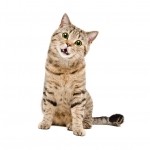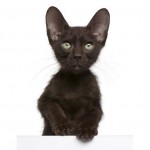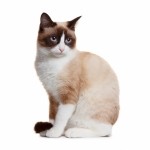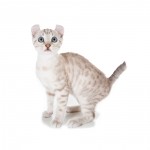

Kittens For Sale
Featured Listings (Follow Breed)
Korat Cat Breed Description
Korat Traits At A Glance
Active
Playful
Requires Attention
Affectionate
Vocal
Docile
Intelligent
Independent
Health
Grooming
Child Friendly
Pet Friendly
Size: The Korat is medium in size and muscular, weighing between 6 to 10 pounds.
Characteristics: The Korat has a compact, muscular body and feel heavier than they appear. They are the only breed that has a heart shaped head with very large, rounded eyes. Their face is sweet and endearing and, with their unique heart-shaped head it is impossible not to fall in love with them. Their front legs are slightly shorter than their back legs and they have a medium length tail.
Temperament: The Korat cat breed is like a small, loving commander. He sees himself as the ruler of the house and likes to enforce his rules often, if you will allow. But, just because he knows what he wants, does not mean he isn't affectionate and loving. They are loyal and sweet and will want to be with you, wherever you are, at all times. They will happily follow you from room to room to see what you are doing. While they are not incredibly verbal cats, they will make sure you know what they want. They are a gentle but energetic cat that enjoys playing games and using their high level of intelligence to learn new tricks. Even though they may be opinionated, they make wonderful companions and, as many fanciers know, it is hard to not fall in love with a Korat.
Care: The single coat of the Korat is very easy to groom. Simply brushing their coat 1 to 2 times each week will keep their coat looking shiny. They may require more frequent brushing during their season of shedding. Frequent nail trimming and ear cleaning will keep your Korat looking as beautiful as it's adored ancestors. Also, be sure to brush your Korat's teeth often to prevent periodontal disease and keep their breath smelling fresh!
Coat: The coat of the Korat is a single coat, silver-tipped blue coat. Kittens are born with the beautiful color, unlike some breeds that don't achieve their color until they reach maturity. They do not reach full maturity until between the ages of 2 to 4, and this is when they also reach full beauty.
Origin: The history of the Korat cat breed dates back quite far. It all started in Siam (now known as Thailand), during the Ayudhya Period of Siamese History (1350-1767 C.E.). During this time, one of the earliest pictures of the Korat was recorded in a book called The Cat-Book Poems. While the exact date cannot be determined because ancient parchment and scrolls were used and the originals were copied onto new parchment as the originals began to deteriorate. The Korat is considered to be one of the "lucky" cats in Thailand and was described with great admiration of their beauty in the book.
Other breeds of cats were owned by royalty, but not the Korat. The Korat was the cat of the common people and were called Si-Sawat, which referred to their appearance (Si: meaning color and Sawat: meaning the silver-blue seed of the Sawat plant). These "good luck" cats were never sold but given as gifts (often in pairs) to show respect and honor for the recipient. The Korat even became the traditional wedding gift in Thailand and was a symbol of prosperity, fortune and even fertility for a marriage. While the Korat has been around for hundreds of years, they did not make their voyage to North America for many years. In 1959, Jean Johnson received a pair of Korats from a friend in Bangkok. Johnson was a cat fancier and member of the Cedar Glenn Cattery and had lived in Bangkok with her husband for a number of years.
She had hoped to acquire a Korat but was unable to purchase one and never received one as a gift. She faced a number of obstacles and never managed to obtain a Korat while living in Bangkok. Johnson was thrilled to receive Nara and Darra from the Mahajaya cattery in Thailand. Nara and Darra would prove to be an essential part of Korat history in North America and became the foundation of the breed we know today. Because of the limited gene pool and need for expansion of the breed, Nara and Darra were bred with Siamese cats. Johnson then removed any kittens with Siamese characteristics from her breeding program to preserve the Korat characteristics.
Further adding to the gene pool, Gail Lankenau Woodward imported a male Korat from the same cattery as Johnson and Gertrude Gecking Sellars also imported a Korat, but hers was a female. Though the breed is one of the oldest, it was not accepted by the CFA and ACA until 1966. The breed is now recognized by all major associations and is a well loved and admired breed. Though the breed has a devoted group of fanciers, it is still quite rare, even in Thailand.




































